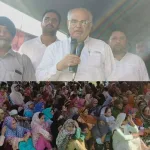The Indian electorates have given the National Democratic Alliance (NDA) government, under the leadership of Prime Minister Narendra Modi, another five-year term to govern. Prior to the announcement of election results, there were discussions centred around the likely focus of the government’s foreign policy, and in that, India’s West Asia (Middle East) policy was one of them. India’s relations, particularly with the Gulf Cooperation Council (GCC) member states and Israel, saw significant improvements during Modi’s previous two terms. Strong convergences of interests, supported by his ‘personal diplomacy’ had contributed immensely towards transforming the ties. Suffice to say that Modi’s ME policy was one of the most successful stories of his foreign policy. The region’s geostrategic-economic importance has, once again, been underscored by the visit of External Affairs Minister, Dr S. Jaishankar, to Abu Dhabi on 23 June 2024, the first one to the ME under the new government. This signified the vital comprehensive strategic partnership between the two countries. The new government will likely strengthen the existing partnerships and also explore potential areas of cooperation. India’s bilateral cooperation with the ME has expanded to other areas, including military-security, maritime cooperation, science and technology, medicine and healthcare, space, food security, cyber security, artificial intelligence, civil nuclear cooperation, fertiliser, climate change, renewable energy, etc. Notwithstanding this expansion, energy and economic cooperation remain important hallmarks of the Indo-ME ties. The succeeding sections briefly assess the likely trajectory of the ties in three specific areas—energy (hydrocarbon trade & renewable), economic cooperation, and maritime cooperation, particularly with GCC countries. The ME remains crucial from the standpoint of India’s economic and energy security calculus and cooperation in these traditional domains will be a priority. Lately, bilateral trade volume with countries, such as Saudi Arabia, the United Arab Emirates (UAE) and Israel, have witnessed a considerable growth. In the fiscal year (FY) 2023, the figure touched US$52.76 with the kingdom, while it was US$85 billion with the UAE, US$4.42 billion with Israel (excluding defence) and US$1.7 billion (2023-24) with Bahrain. Moreover, the India-UAE Comprehensive Economic Partnership Agreement (CEPA), signed in February 2022, will strengthen commercial partnership, and will assist both sides touch the bilateral trade figure (in non-oil) of US$100 billion by 2030. To achieve this target, CEPA is believed to have ushered in “cuts in tariff, fast-tracked approvals for business, access to trade zones etc.”, and mutual investment opportunities are opening up. The implementation of a “local currency trade settlement agreement, the launch of UAE’s domestic credit/debit card based on India’s RuPay card stack” will facilitate more bilateral financial engagements. A similar trend can be expected with Saudi Arabia, India’s 19th-largest investor, and its fourth-largest trading partner. Their robust bonds are characterised by growing trade and investment ties, financial and business partnerships, and increasing cooperation in infrastructure development, renewable energy, food security, and the military-security spheres. The Strategic Partnership Council (SPC), established in 2019, and convened its first meeting in September 2023 in New Delhi, will play a pivotal role in steering the trade and security ties between the two countries. The SPC is an important bilateral institutional mechanism that will facilitate policy formulation, discussions, and coordination between stakeholders as well as implementation of the initiatives. Under the visionary leadership of Modi and Saudi’s Crown Prince, Mohammed bin Salman (MbS), both sides aim to take the trade to as high as US$100 billion. The growth in the economic ties has come at a juncture when India is focusing on increasing its economic status by forging partnerships with its international partners. Simultaneously, the Gulf states are also looking towards the Asian economies for investments and joint collaborations to align with the missions and visions, and to achieve their targets of several socio-economic reform plans being introduced by them (such as the Saudi Vision 2030). As interests are converging, the NDA government and the regional bloc – GCC – must make efforts to materialise the Free Trade Agreement (FTA), which is pending. In the FY 2022-23, GCC became India’s largest regional trading paper, comprising 15.8 per cent of the latter’s total trade. The appointment of chief negotiators, however, towards the end of last year could be construed as a signal from both sides to clinch this agreement. It, therefore, looks promising that economic relations will continue to flourish.
India-West Asia Relations

Sign Up For Daily Newsletter
Be keep up! Get the latest breaking news delivered straight to your inbox.
By signing up, you agree to our Terms of Use and acknowledge the data practices in our Privacy Policy. You may unsubscribe at any time.
Leave a Comment Leave a Comment
Stay Connected
Latest News
Recent Posts
- J&K Assembly session likely in Sept, says Minister Dar
- Omar govt committed to transforming education in J&K: MLA Tanvir
- Under Modi’s leadership, every citizen’s voice matters: Ashok Koul
- BJP’s Er Aijaz celebrates Onam with CRPF, security forces
- Crackdown on terror ecosystem: LG terminates services of two J&K govt employees







